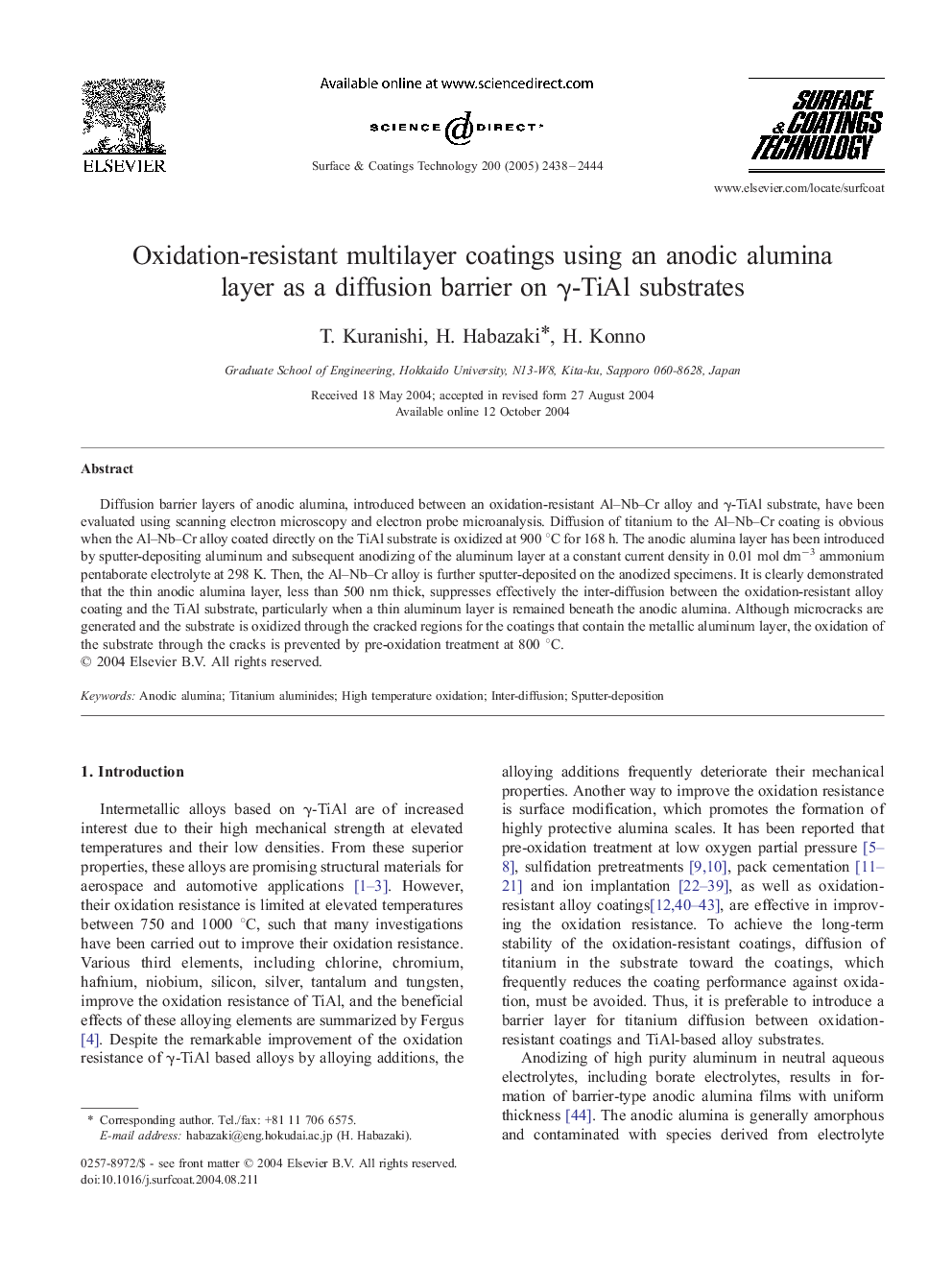| Article ID | Journal | Published Year | Pages | File Type |
|---|---|---|---|---|
| 1663464 | Surface and Coatings Technology | 2005 | 7 Pages |
Abstract
Diffusion barrier layers of anodic alumina, introduced between an oxidation-resistant Al-Nb-Cr alloy and γ-TiAl substrate, have been evaluated using scanning electron microscopy and electron probe microanalysis. Diffusion of titanium to the Al-Nb-Cr coating is obvious when the Al-Nb-Cr alloy coated directly on the TiAl substrate is oxidized at 900 °C for 168 h. The anodic alumina layer has been introduced by sputter-depositing aluminum and subsequent anodizing of the aluminum layer at a constant current density in 0.01 mol dmâ3 ammonium pentaborate electrolyte at 298 K. Then, the Al-Nb-Cr alloy is further sputter-deposited on the anodized specimens. It is clearly demonstrated that the thin anodic alumina layer, less than 500 nm thick, suppresses effectively the inter-diffusion between the oxidation-resistant alloy coating and the TiAl substrate, particularly when a thin aluminum layer is remained beneath the anodic alumina. Although microcracks are generated and the substrate is oxidized through the cracked regions for the coatings that contain the metallic aluminum layer, the oxidation of the substrate through the cracks is prevented by pre-oxidation treatment at 800 °C.
Keywords
Related Topics
Physical Sciences and Engineering
Materials Science
Nanotechnology
Authors
T. Kuranishi, H. Habazaki, H. Konno,
